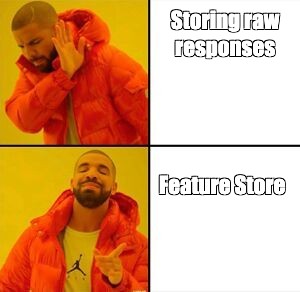Hi all,
Today we are continuing with our series of articles about data usage, AI/ ML modeling, and analytics in banking.
Start.
In today’s data-driven world, businesses have a wealth of information available to them, gathered from a myriad of sources. However, a common challenge that most organizations face is the non-uniform format of this data, which can impede the process of ingestion, analysis, and production. Adding to the complexity, introducing a new data provider to an existing system often necessitates significant modifications to the databases, which can be both time-consuming and expensive. One promising solution to these problems lies in the implementation of feature stores.
The Issue with Non-Uniform Data
Data, in its raw form, comes in a variety of shapes and sizes. Different data sources often use different formats, conventions, and structures, making the process of integrating these datasets into a unified system a daunting task. For instance, consider a situation where a business wishes to add a second open banking information provider. This new provider might introduce fresh data points, but they’re likely to come in a format that the existing databases can’t handle without substantial changes. Such alterations can cause disruptions in data flow downstream, leading to potential inefficiencies and delays.

The Feature Store Solution
A feature store is an architectural component designed to bridge this gap, functioning as a centralized repository for data features. It provides a unified interface where pre-processed data features can be stored, shared, and retrieved, ensuring consistency across different models and reducing the duplication of work.
With a feature store in place, adding a new data provider becomes significantly less onerous. The data points from the new source are simply preprocessed into a consistent format and added to the feature store. From there, they can be readily ingested into any database or model that interfaces with the feature store. This eliminates the need to redesign the database for each new data source, providing a scalable solution to a common problem.
Advantages of Feature Stores
Feature stores offer several key advantages. Firstly, they provide a streamlined and efficient way to manage data from multiple sources, making it easier to incorporate new data providers without disrupting existing processes. This agility can be a game-changer in an environment where data is constantly evolving.
Secondly, feature stores promote reusability and consistency. Data scientists can create, share, and reuse features across different models, thereby reducing redundancy and ensuring consistent data interpretation. This feature reuse also accelerates the process of developing and deploying machine learning models, contributing to improved productivity.
Lastly, feature stores offer traceability and version control for data features, ensuring compliance with data governance and regulations. By tracking the usage of features, they provide visibility into how data is being used and by whom, thereby fostering accountability and transparency.
.

Challenges of Feature Store Implementation
Despite the apparent benefits, implementing a feature store is not without its challenges. Firstly, building a feature store requires considerable technical expertise and resources. Depending on the specific requirements of an organization, a feature store might require the integration of various technologies and tools, which could be a complex endeavor.
Secondly, transitioning to a feature store-based architecture necessitates a shift in data culture. It requires a buy-in from all stakeholders, including data scientists, data engineers, and business teams, which may be difficult to achieve.
Finally, while feature stores offer a potential solution to the non-uniform data problem, they don’t entirely eliminate the need for data preprocessing. Data still needs to be transformed into a format that can be stored and retrieved in the feature store. However, the benefits often outweigh the initial setup challenges, making feature stores a compelling solution in the quest to navigate the non-uniform data landscape.
In conclusion, as businesses continue to grapple with the complexities of managing diverse data, feature stores present an exciting opportunity to streamline and simplify the process.
Contact us to learn more about handling data for lending purposes with timveroOS